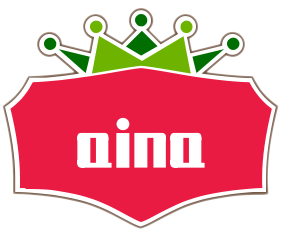375ai aims to fuse AI, edge computing, and decentralized governance into a scalable data-intelligence network.
Overview
375ai is a decentralized edge intelligence network that combines AI, data processing at the edge, and blockchain incentives to enable real-time insights from distributed data sources.
It aims to democratize access to data processing power and AI capabilities by leveraging a decentralized network of edge nodes, with token-based incentives to encourage participation and contribution.
The 375ai is a scalable DePIN-like architecture where operators run edge compute resources, contribute data streams, and earn rewards, while developers and users access AI models and datasets securely.
What is 375ai
-
Core idea: Use edge computing to process data near its source, reducing latency and preserving privacy, while coordinating participants through blockchain-based governance and rewards.
-
Key components: Edge AI nodes, data streams, decentralized governance, utility tokens, and a reward distribution mechanism to motivate performance and reliability.
-
Token model: A native utility token used for governance, staking, access to premium services, and rewards for data contributors and node operators.
How it Works
-
Core idea: Move AI inference and data processing closer to data sources (the edge) to minimize latency and preserve privacy, while coordinating participants through a blockchain-based governance and reward system.
-
Edge nodes: Operators deploy hardware/software to perform AI inference, data aggregation, or preprocessing at the network edge.
-
Data contributions: Participants supply data or compute resources; data handling emphasizes privacy, cryptographic proofs, and auditable contributions.
-
Incentives: Token rewards align interests of operators, data providers, and developers; staking and governance mechanisms enable community participation.
-
Governance: Token holders influence protocol upgrades, fee structures, and policy decisions through on-chain voting and proposals.
-
Security and privacy: Encryption, zero-knowledge techniques, and audits are used to protect data while enabling verifiable contributions.
Airdrops and Participation
-
What to expect: 375ai Airdrops typically reward early adopters, participants in testnet activities, or users who complete onboarding tasks (e.g., setting up nodes, staking, or participating in governance). Details such as eligibility, timelines, and required actions are announced by the project through official channels.
-
Step-by-step to participate (general pattern):
-
Verify official sources: Confirm the project’s current official website, social channels, and announcements to avoid scams.
-
Create accounts and wallets: Set up a compatible wallet and ensure you can securely store any tokens you may receive.
-
Engage with onboarding tasks: Complete eligible activities such as node deployment, staking, or testnet participation as instructed by the official guides.
-
-
-
Monitor eligibility and rewards: Track your participation status through the project’s dashboard or explorer, and claim rewards when available.
-
Security best practices: Use hardware wallets if possible, enable 2FA on all accounts, and be wary of phishing attempts and impersonators.
-
-
Red flags: Unrealistic guarantees of easy riches, unsolicited messages asking for private keys, or requests for private seed phrases.
FAQ
-
What is the utility of the 375ai token? Governance, access to premium datasets/models, staking rewards, and potentially transaction fees within the ecosystem.
-
What networks or chains does 375ai use? The project is associated with Solana-based infrastructure and DePIN-style edge networks; verify current core chain and any cross-chain bridges via official sources.
-
How can I verify legitimate information about airdrops? Rely on official project communications (website, verified social accounts, and medium/announcement posts). Avoid third-party rumor sites or anonymous sources.
-
Is 375ai suitable for developers? Yes, developers can leverage edge AI capabilities and tokenized incentives to build, deploy, and monetize AI-enabled data services at the edge.
-
What about security and audits? Reputable DePIN projects typically publish security audits and enforce cryptographic proofs to protect data integrity and participant contributions.
Manuals, Guides, and Resources
-
Look for official whitepapers, user guides, and deployment manuals that cover node setup, staking, governance procedures, and FAQ sections.
-
Access to developer documentation, API references, and explorer dashboards is common for understanding how contributions are measured and rewards are calculated.
Performance and Use Cases
-
Real-time edge intelligence: Applications requiring low latency data processing, privacy-preserving analytics, and federated learning-style workflows.
-
Data monetization: Organizations and individuals can monetize data streams by contributing compute and data to the network.
-
AI model deployment: Deploy and run AI models at the edge to deliver fast inferences for IoT, mobility, or industrial use cases.
Conclusion
As with any emerging DePIN project, success hinges on clear governance, robust security, clear token economics, and broad ecosystem participation.
Always rely on official communications for the latest details on eligibility for airdrops, current tokenomics, and deployment steps.
If desired, check the latest official announcements to tailor this overview with year-specific data, current roadmap milestones, and any newly released manuals or compliance notes.

